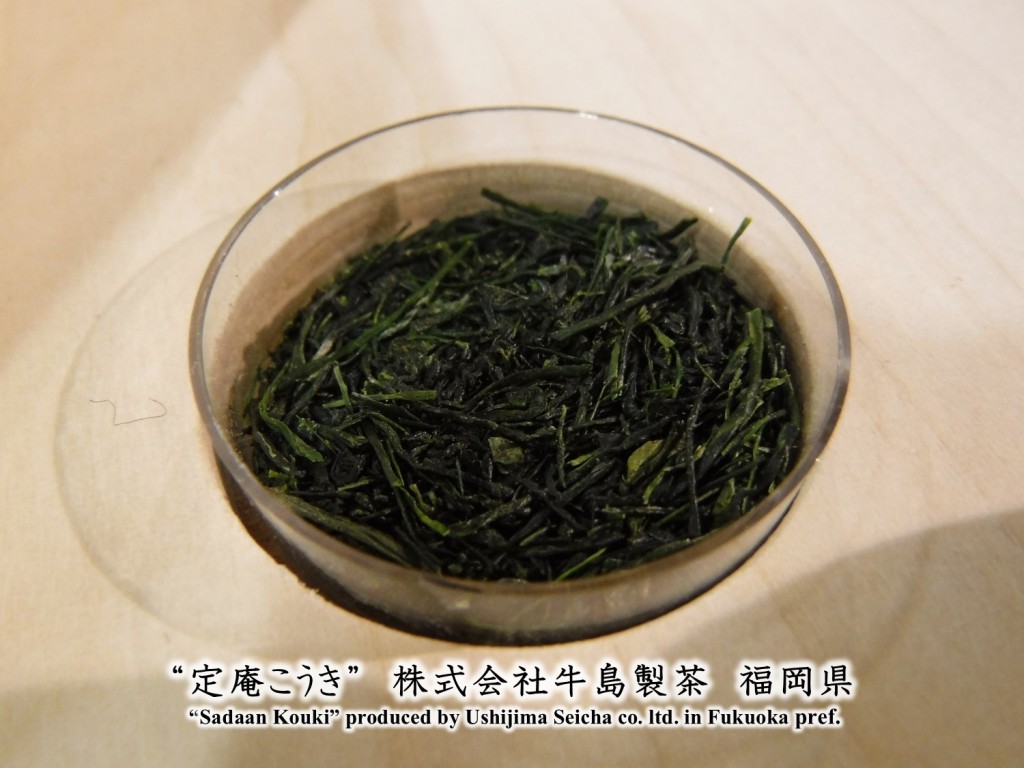The tea is the one, elected as the best Japanese Tea Award 2017 in Tokyo Tea Party.
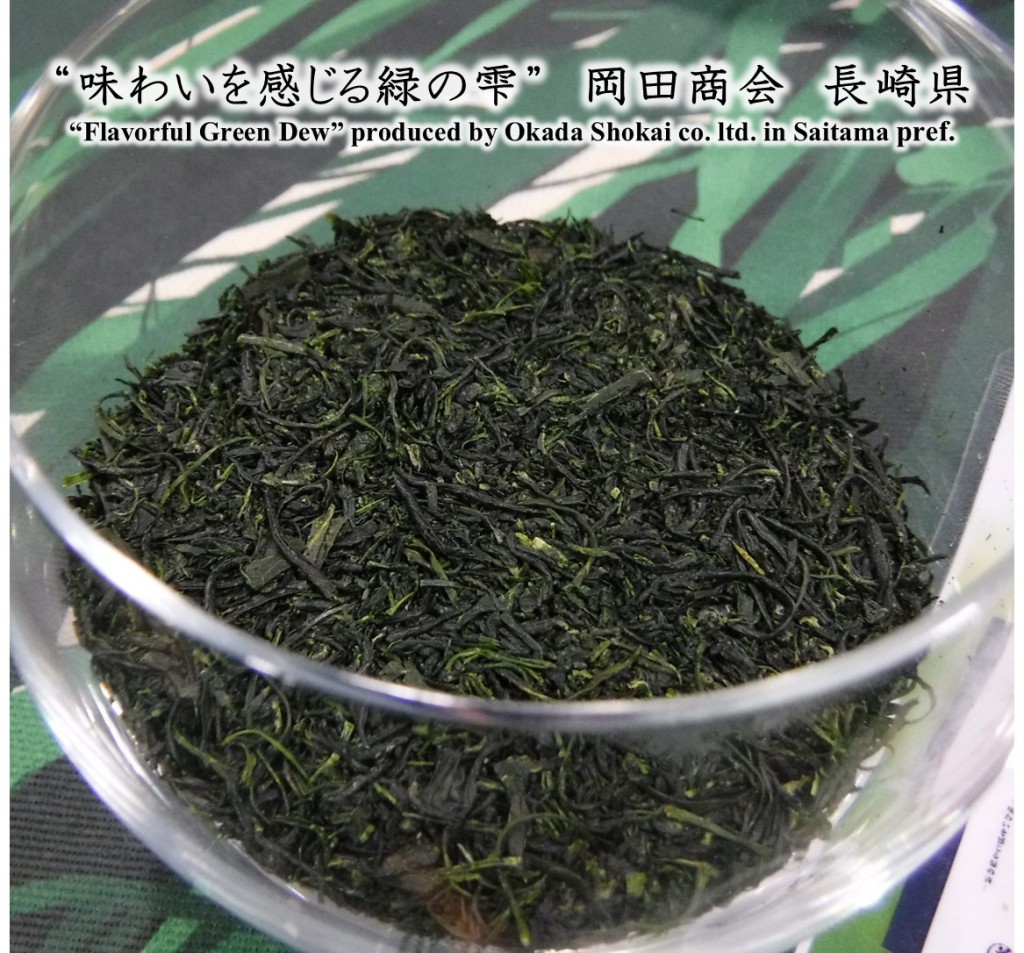
This tea “Flavorful Green Dew” is produced by Okada Shoten in Nagasaki prefecture. I felt the aroma of infusion has oily sweet note. The infusion has rich umami and mild texture with long wonderful finish, which changed from fresh astringency to mellowness gradually. I think the unique finish is characteristic to the higher grade of Sencha green tea.
The appearance of loose leaf tea exhibited nice deep green and twisted shape, which is characteristic to the green teas produced in Nagasaki prefecture.
Roasted Oolong Blend was awarded as the second prize of Japanese Tea Award 2017.
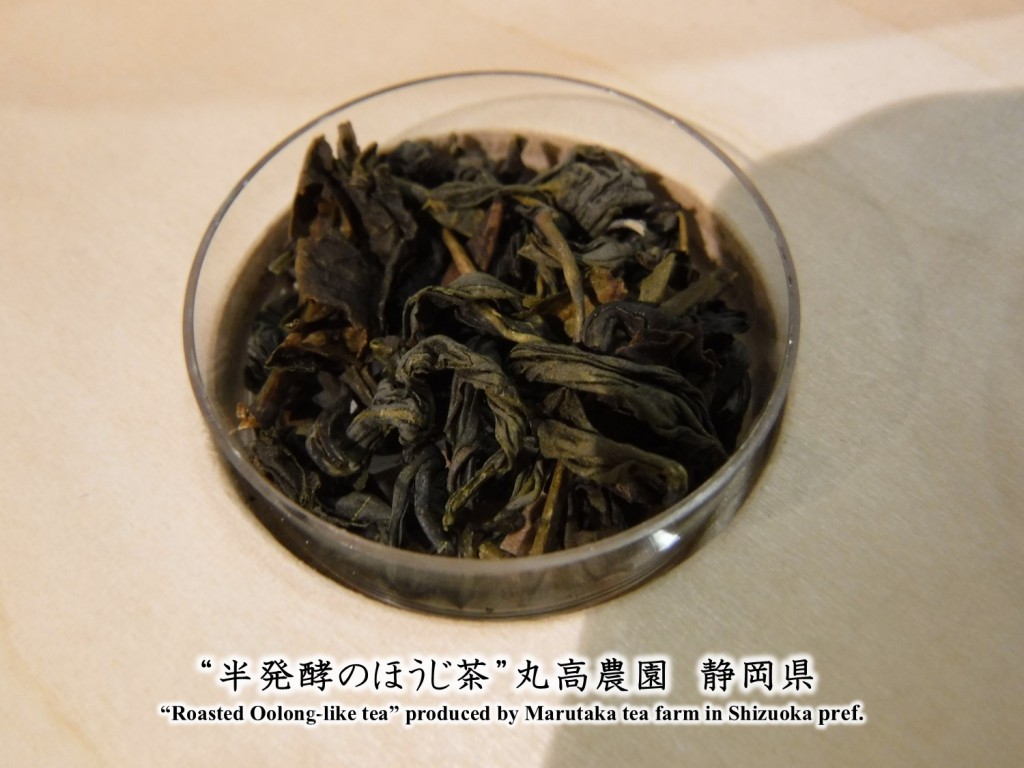
This unique tea was produced by Marutaka Tea Farm.

The infusion expressed wonderful toasty aroma having somehow bean-like nuance and delighted me with long finish which gained gradually and vapored freshly to nose from mouth.
This could be the one I desire as one of the best roasted tea.
These top two awarded tea were served in the wining tea service in Tokyo Tea Party.
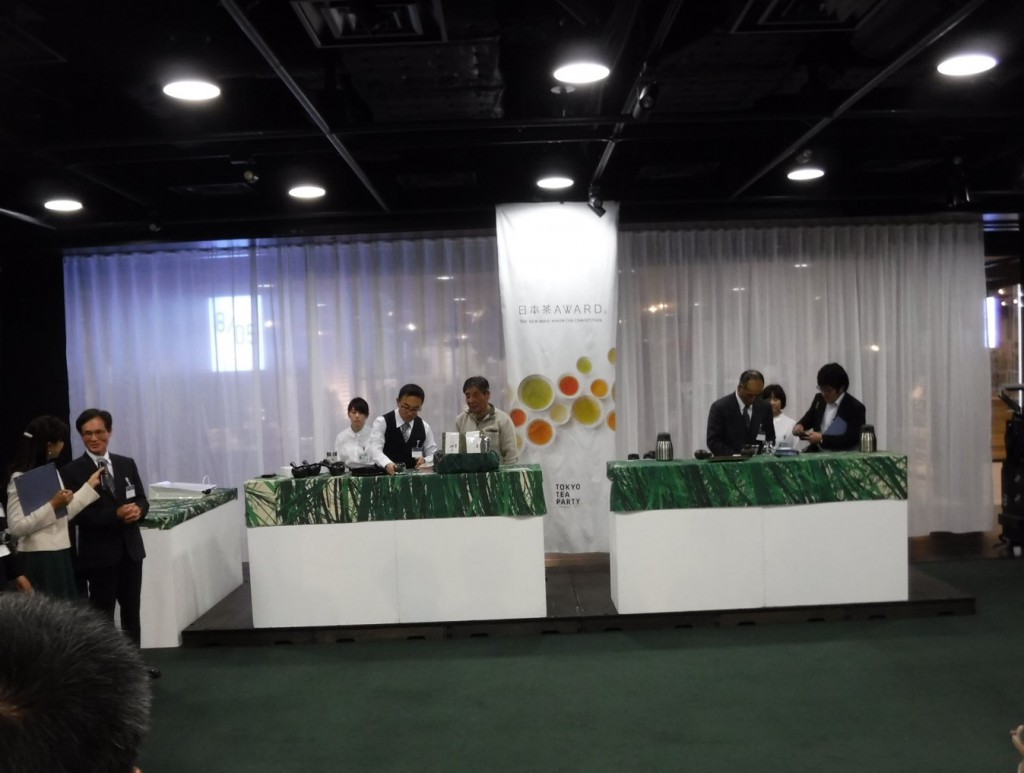
In the wining tea service, awarded tea creators explained the features of their teas.
Marutaka Tea Farm explained that the roasted oolong contains 5 cultivars. Koshun, Benifuki, Izumi and 2 native varieties with brewing tea.
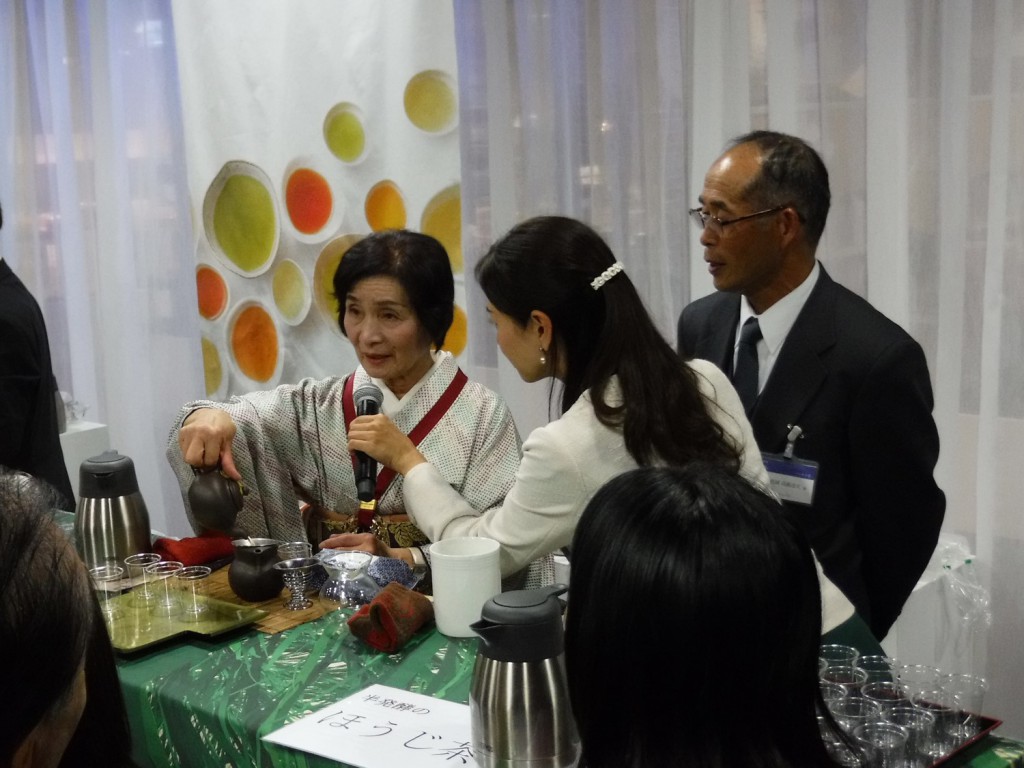
The tea farm cultivate various cultivars, including original growing cultivar such as ‘Koju’. Let’s say, they are tea farmer and at the same time tea breeder.
The coulpe of tea farmer enjoyed conversation with visitors.
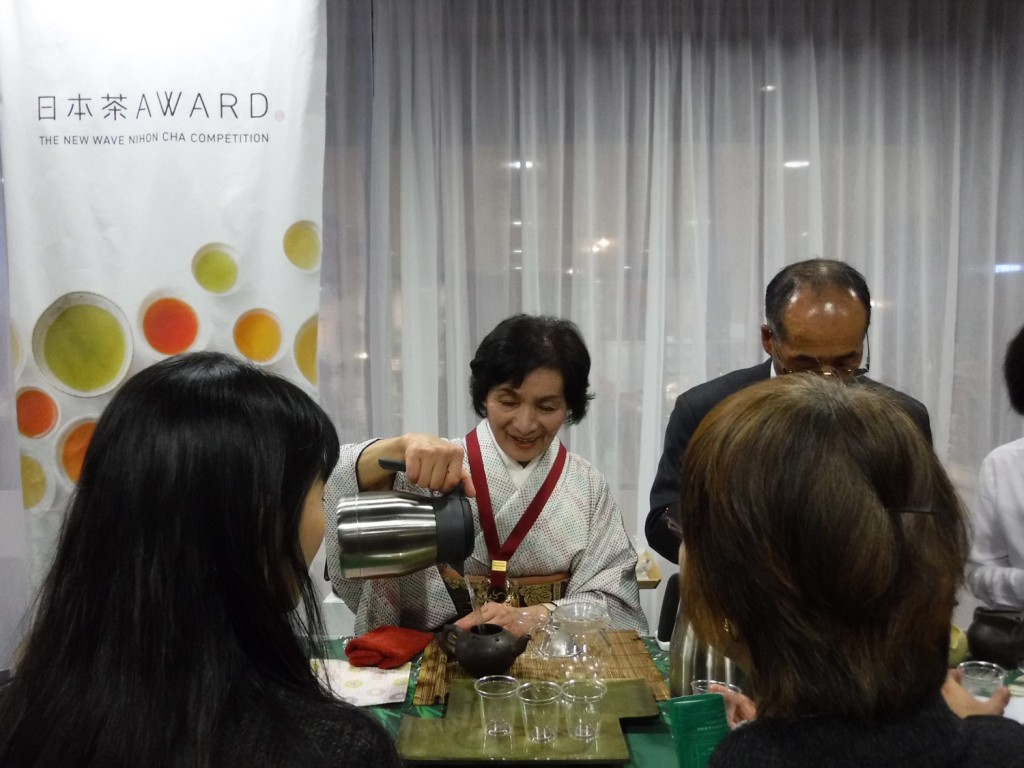
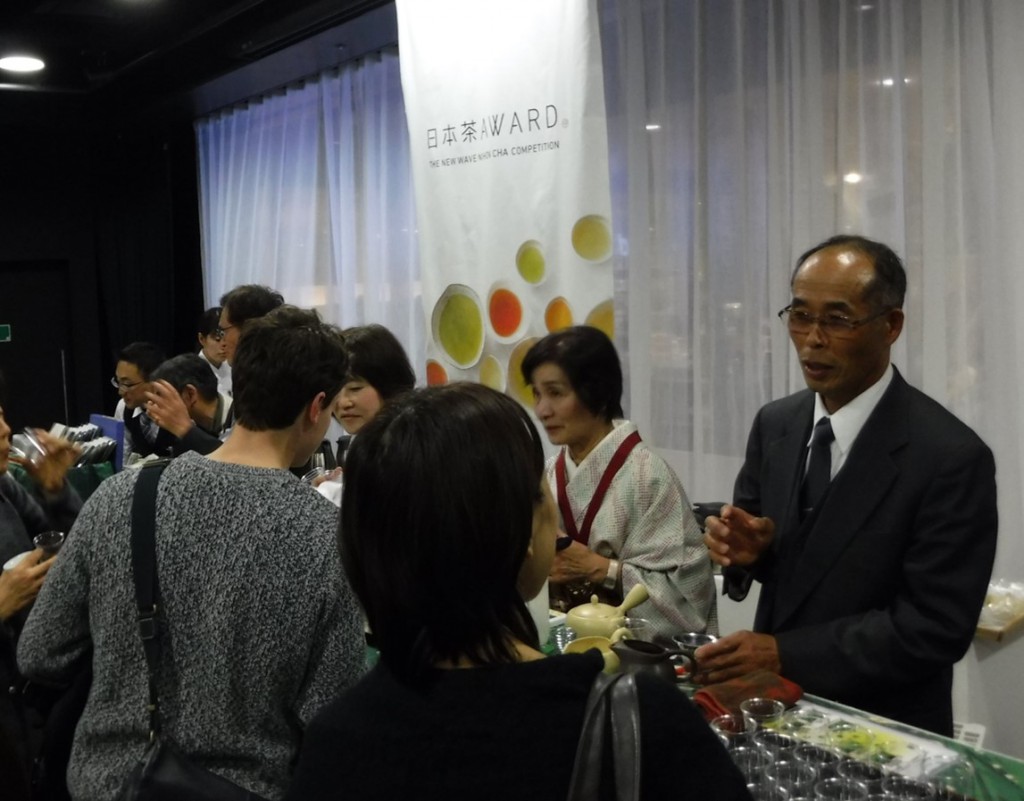
Sensory evaluation of tea has been generally conducted by professional people such as tea taster, tea blender or tea merchant etc. to evaluate the quality of crude teas. On the other hand, Tokyo Tea Party provides an open opportunity to taste, enjoy and elect refined specialty teas according to each preference by visitors, consumers and tea fanciers.
Tea creators would enjoy the communication with such kind of people.
Okada Shoten also served their flavorful green dew for visitors.
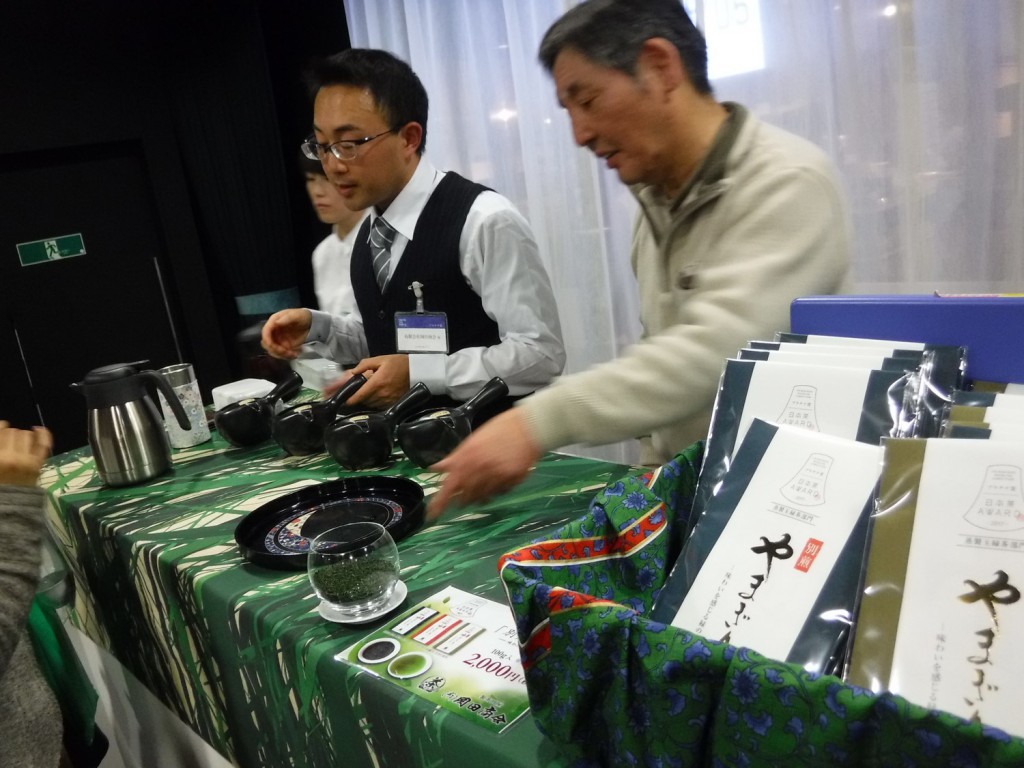
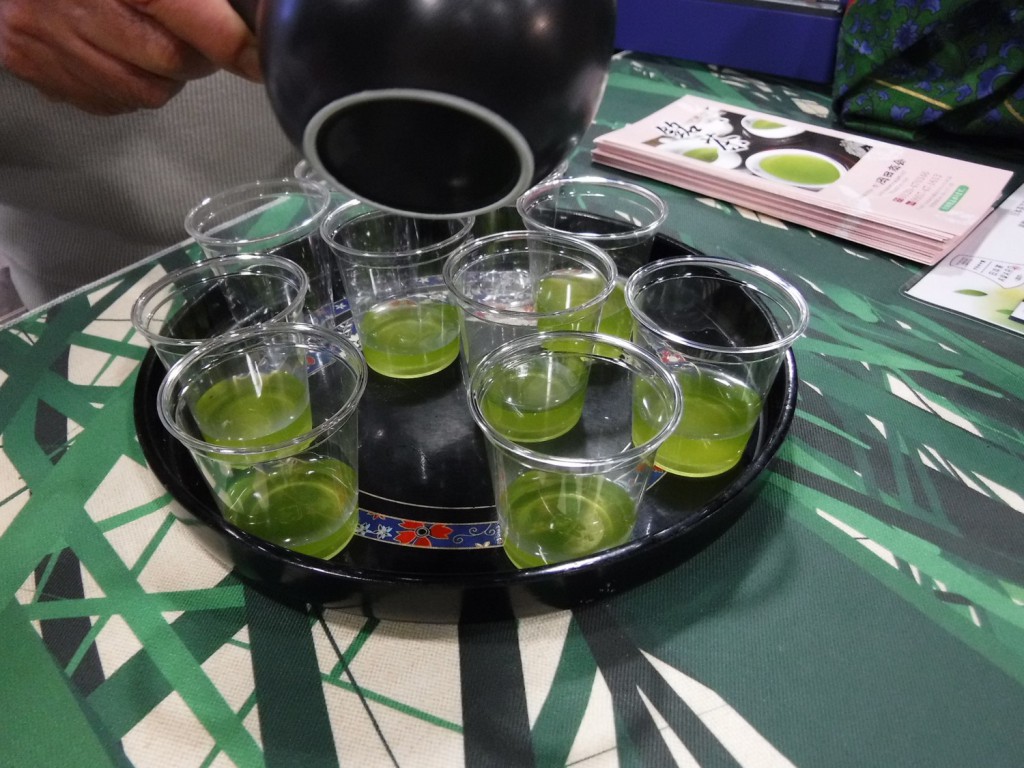
Awesome! What a amazing bright green color!!
In “Japanese Tea Award 2017” the competition of specialty teas in Japan, 18 teas has been selected as “Platina Prize” from 405 teas applied for the competition. And those two were elected as top 2. In the final selection, 515 participants voted for their best one.
The best prize “Flavorful Green Dew” won 50 votes, slightly less than 10 % of the ballot. The second “Roasted Oolong Blend” won 44 votes. These somehow lower rate of obtained votes implies the wide distribution of participants’ preference. As mentioned by Prof. Nakamura in the University of Shizuoka, 18 platina-prized teas has almost same potential and the features of them gained diversity compared with the result in the 1st-place Japanese Tea Award.
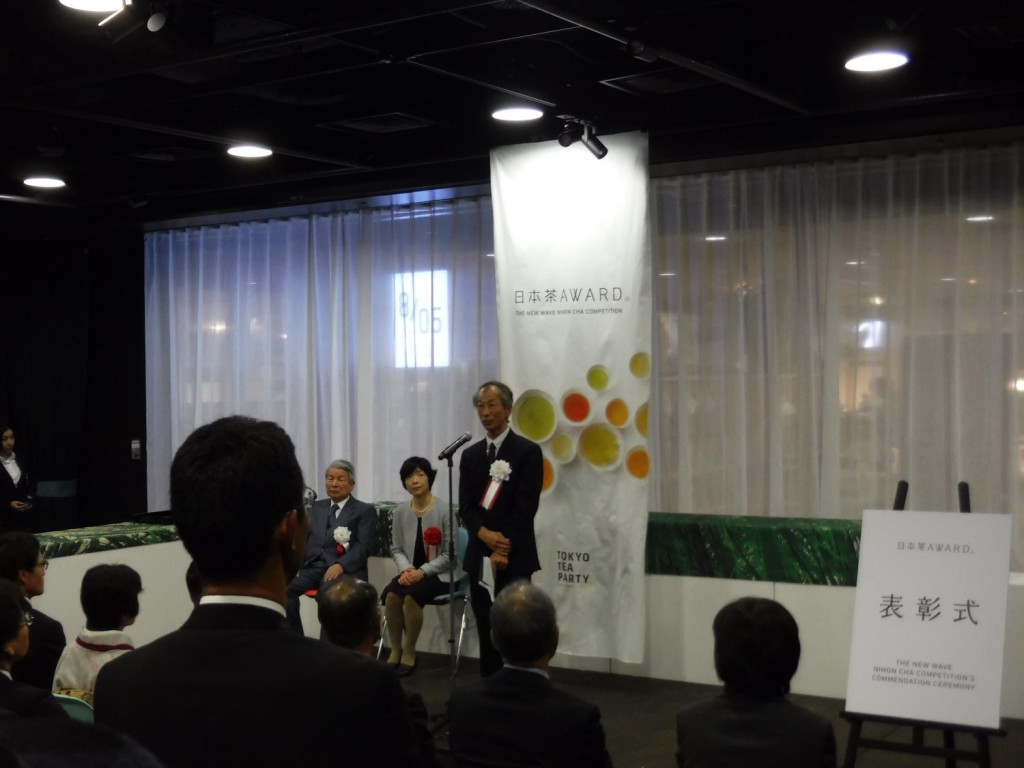
The type of tea was roughly distinguished 7, orthodox Sencha green tea, Tamaryokucha green tea, Oolong tea, Black tea, Hojicha roasted green tea, withered green tea, Gyokuro green tea etc. using various cultivars such as Yabukita, Saemidori, Tsuyuhikari, Benifuki, Koshun, Izumi, Koju, Saeminami, Okumidori, native varieties and so on. The result implies diverse demand of consumers and tea enthusiasts.
Considering the numerous factors affecting tea flavor and diversity of tea creators’ motivation, we could have the infinite possibility to meet new faces of fantastic teas. The odyssey for the one might provide us with fantastic meets to ideal teas according to occasions.
I’d like to share pictures of the other awarded teas which won platina-prizes and were elected for the final competition, Tokyo Tea Party 2017. They have different characteristics, flavor, texture and appearance. They could be the one.
Sencha of “Koju” cultivar produced by Marutaka Farm
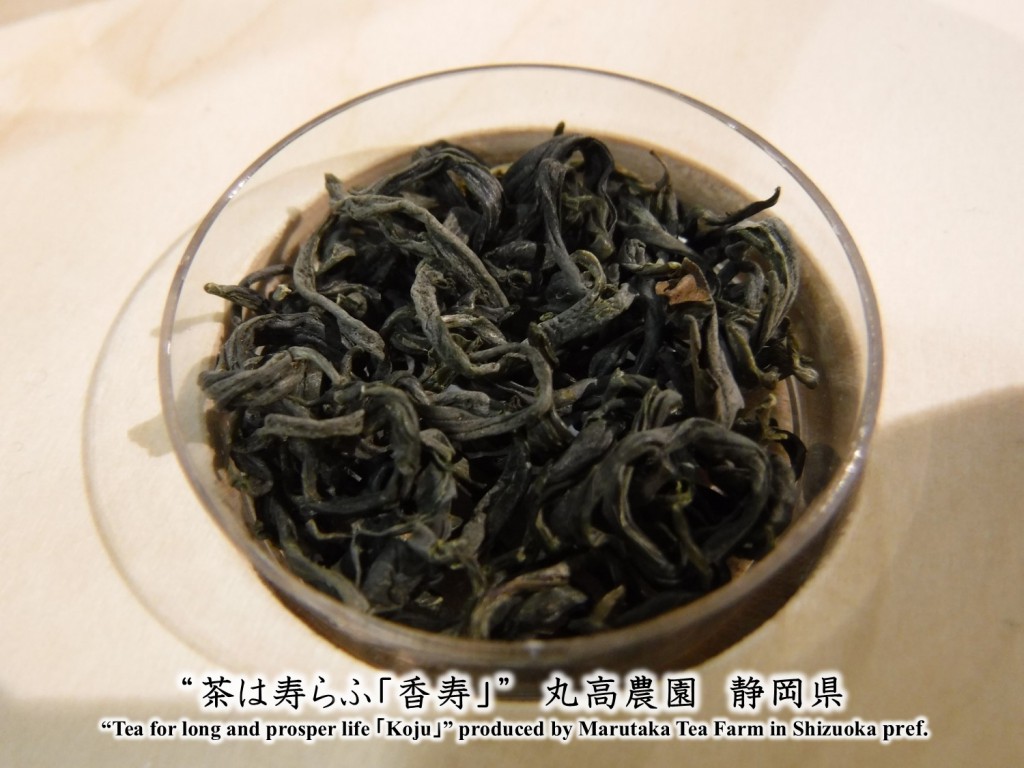
‘Koju’ is the tea cultivar which was selected and propagated by Marutaka Farm. Mr. Takahashi, the tea farmer of Marutaka Farm, has found a unique tea plant from tea bushes of ‘Yabukita’ cultivar in his plantation and propagated the unique one by himself, and named as ‘Koju’. ‘Koju’ cultivar has a specific potential to generate highly aromatic tea by withering. In the processing of crude tea of ‘Koju’, Mr. Takahashi withers tea shoots of ‘Koju’ before steaming to activate aroma generation in tissues of tea leaves. This Sencha of ‘Koju’ cultivar has a wonderful aroma like Muscat grape.
Deep steamed Sencha of ‘Saemidori’ cultivar produced by Kanetou Miura-en
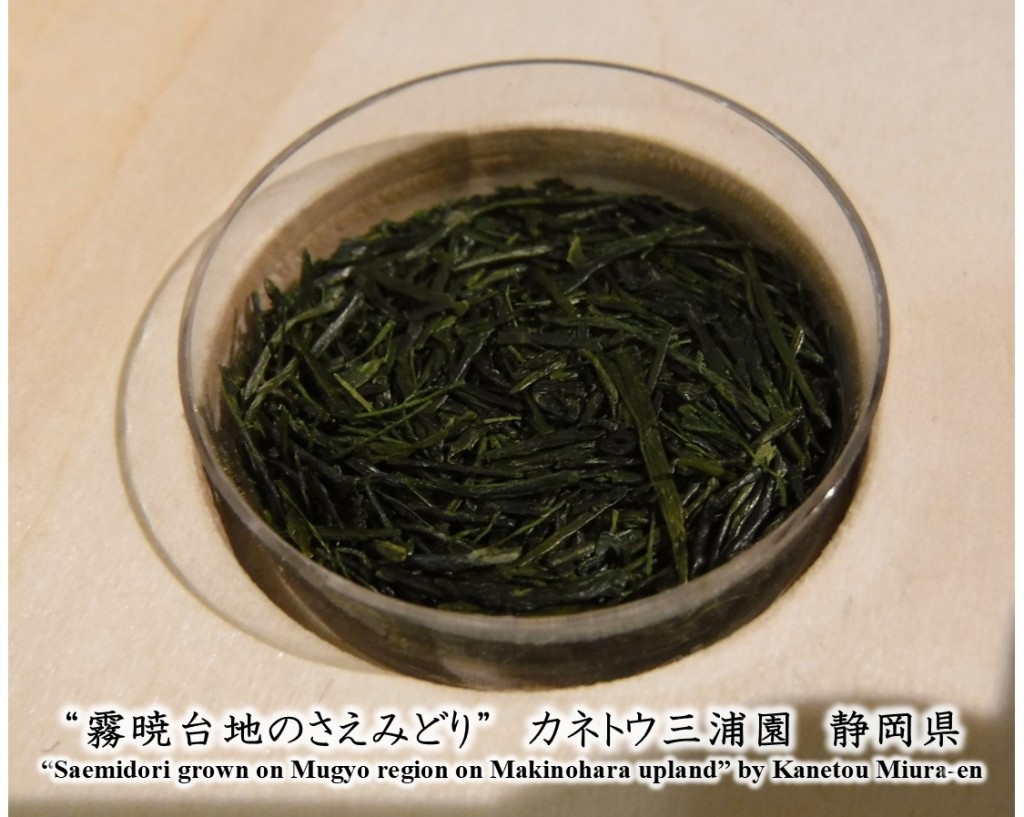
Kanetou Miura-en produces prominent teas and their skills of cultivation and tea processing were awarded as the prize of MAFF. The family of Miura-en has developed the north part of Makinohara upland after WWII cooperating with farmers and related businesses. The name of this tea is derived the nickname “Mugyo upland”, named for the region they developed for tea plantations.
As getting population in Japan, ‘Saemidori’ cultivar has excellent feature as Sencha. Lower astringency, higher umami content and bright green color of infusion. The sophisticated skill of Kanetou Miura-en results in the fantastic flavor with the excellent finish.
‘Tsuyuhikari’ produced by Oguri Farm
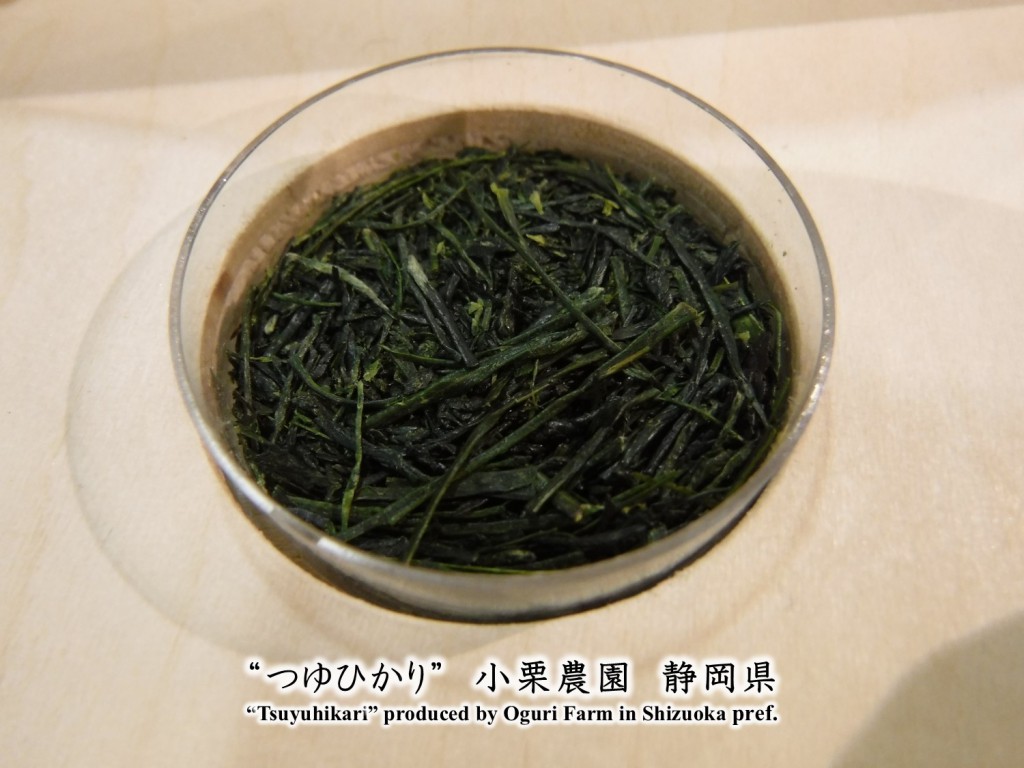 ‘Tsuyuhikari’ produced by Oguri Farm has an excellent richness, which is especially expressed by condensed cold infusion as posted before. In addition, the infusion of this tea brewed at the event has also sweet toasty aroma. In my opinion, ‘Tsuyuhikari’ cultivar has higher content of umami and the umami can be easily extracted under lower temperature. I’d like to enjoy this tea infused in refrigerator over a night in a morning, especially in busy day.
‘Tsuyuhikari’ produced by Oguri Farm has an excellent richness, which is especially expressed by condensed cold infusion as posted before. In addition, the infusion of this tea brewed at the event has also sweet toasty aroma. In my opinion, ‘Tsuyuhikari’ cultivar has higher content of umami and the umami can be easily extracted under lower temperature. I’d like to enjoy this tea infused in refrigerator over a night in a morning, especially in busy day.
Deep steamed green tea of ‘Saeminami’ cultivar by Miedai Seicha co. ltd.
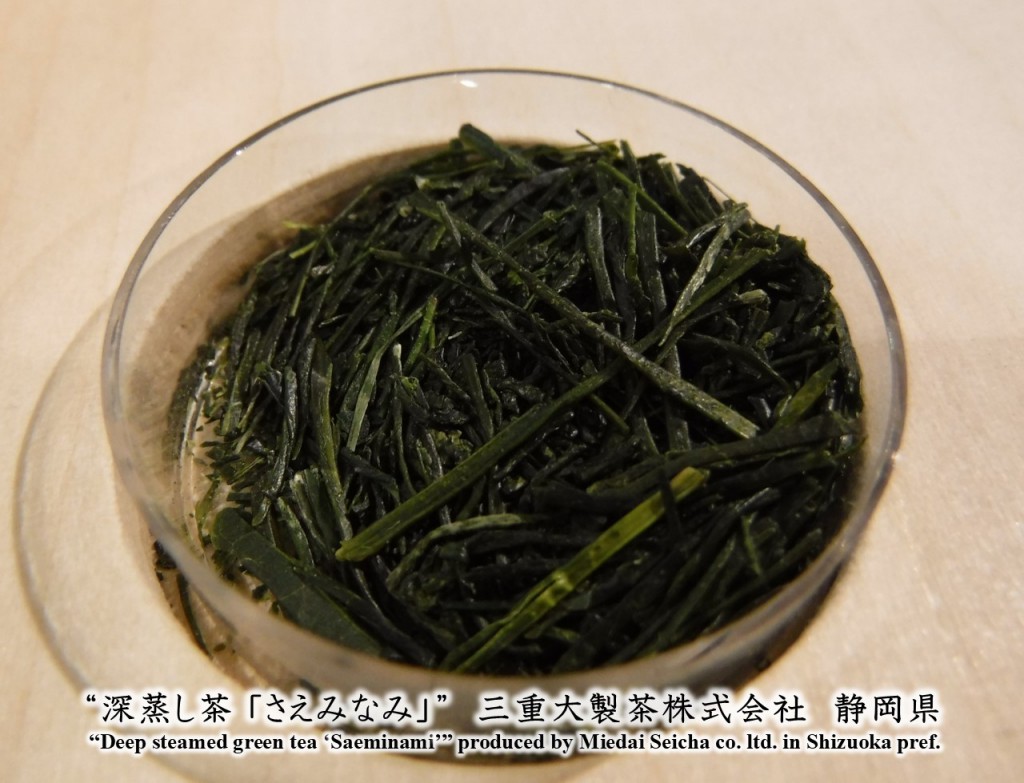 Amazing a nice finish with vapor of fresh green aroma passing through nose from mouth!
Amazing a nice finish with vapor of fresh green aroma passing through nose from mouth!
Makinohara ‘Tsuyuhikri’ produced by Yamaari Seicha co. ltd.
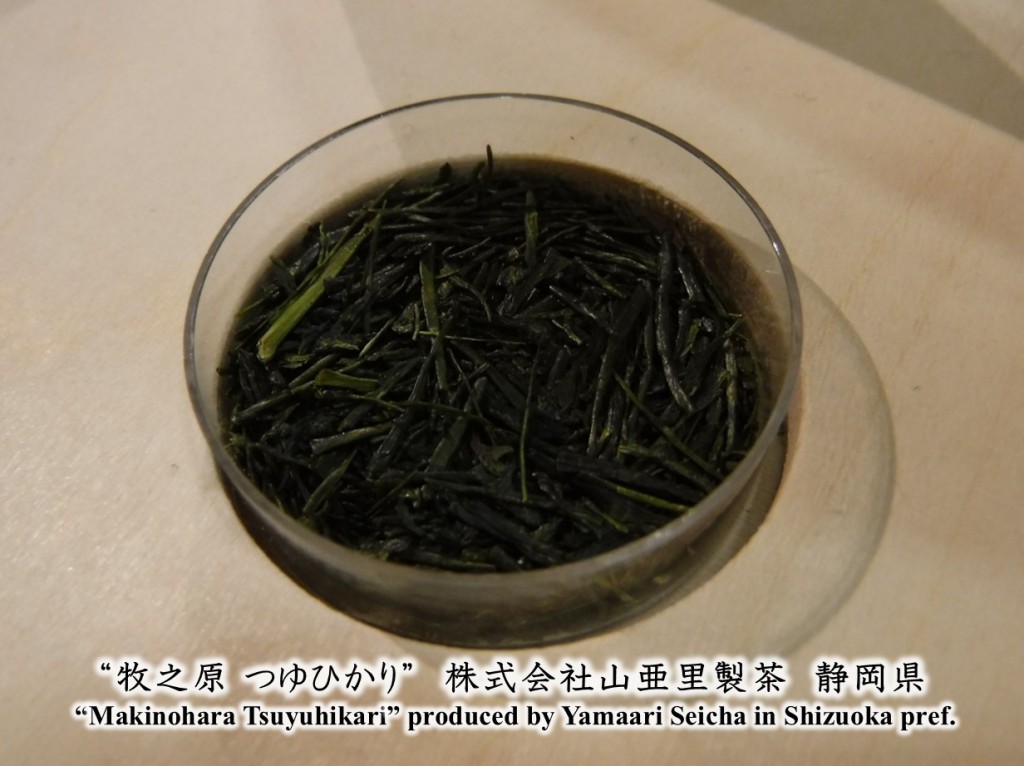 In my opinion, this tea of ‘Tsuyuhikari’ has well-balanced flavor which would be preferred by many people. Hopefully many people could enjoy this mild tannin with slight sweet aroma and fresh finish. In Tokyo, we can get the teas made by Yamaari Seicha in “Shigetsu-en” located in Akabane.
In my opinion, this tea of ‘Tsuyuhikari’ has well-balanced flavor which would be preferred by many people. Hopefully many people could enjoy this mild tannin with slight sweet aroma and fresh finish. In Tokyo, we can get the teas made by Yamaari Seicha in “Shigetsu-en” located in Akabane.
Hand-Plucked Black Tea of Summer Flush produced by Kanetou Miura-en
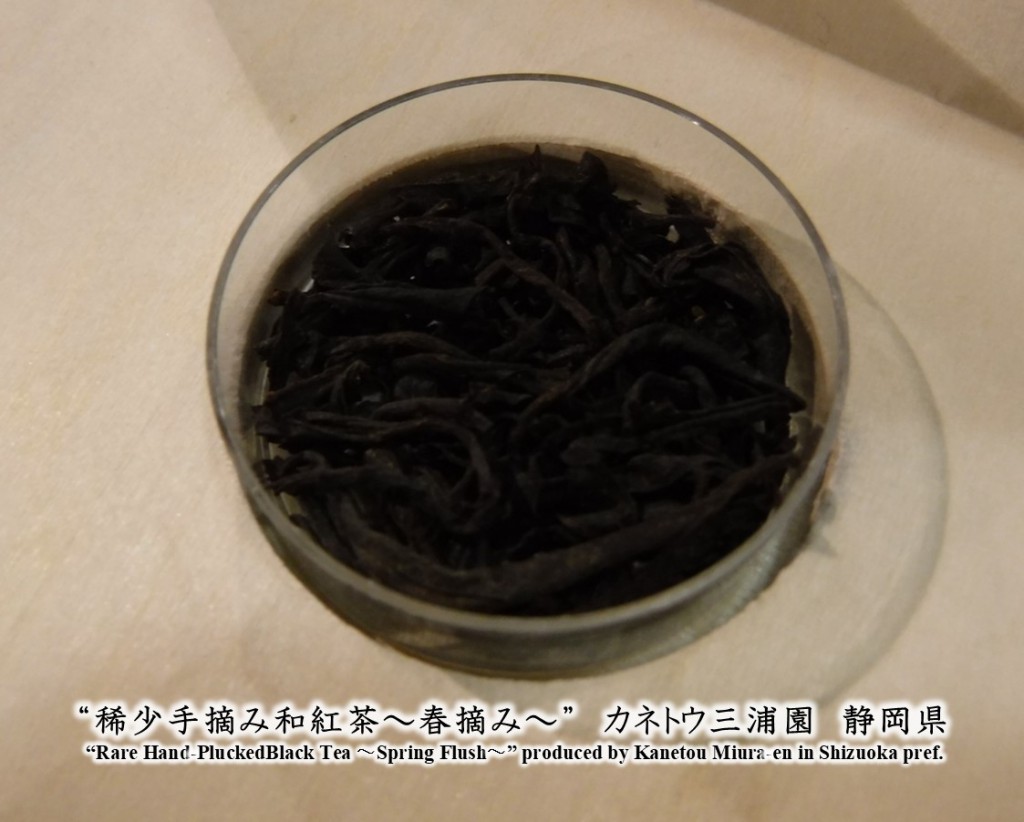 Black tea made by Kanetou Miura-en has delightful tannin with comfortable finish.
Black tea made by Kanetou Miura-en has delightful tannin with comfortable finish.
The clean amber ilquor was reported at the past post.
“Kanreisha” produced by Sano Seichajyo Tea Factory
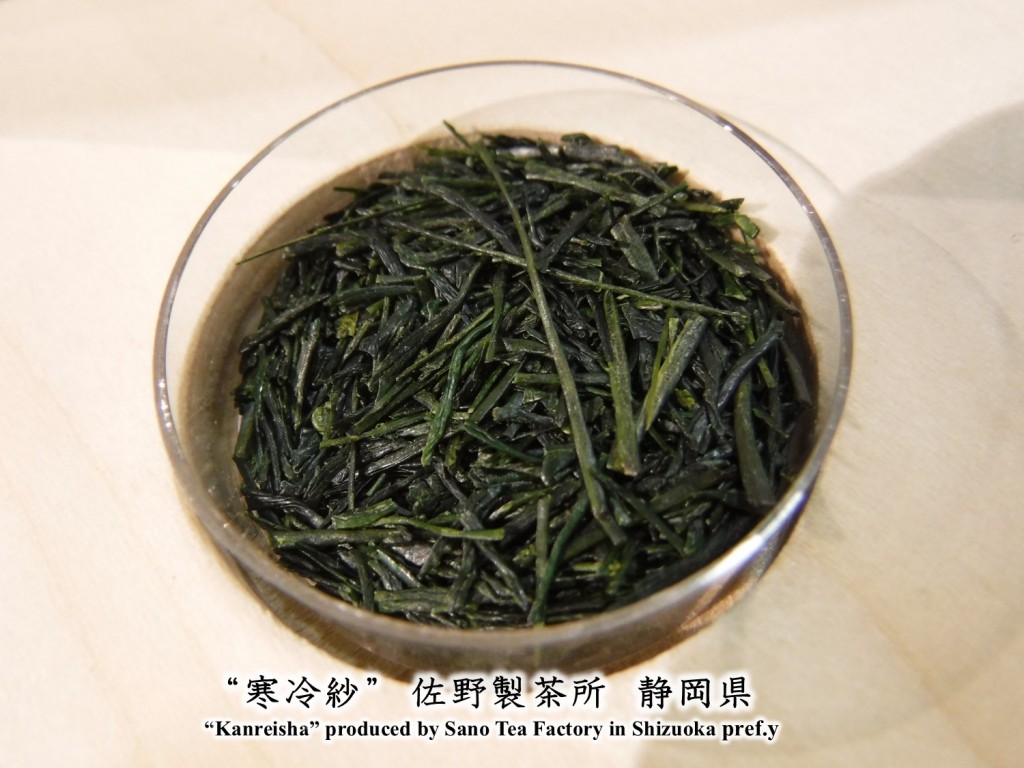 Kanreisha means a sheet for protection of tea bushes against frost damage. The name implies the tea was grown under the shade of Kanreisha. In fact, the liquor color was clear deep green.
Kanreisha means a sheet for protection of tea bushes against frost damage. The name implies the tea was grown under the shade of Kanreisha. In fact, the liquor color was clear deep green.
The Ultimate Japanese Black Tea produced by teaholics
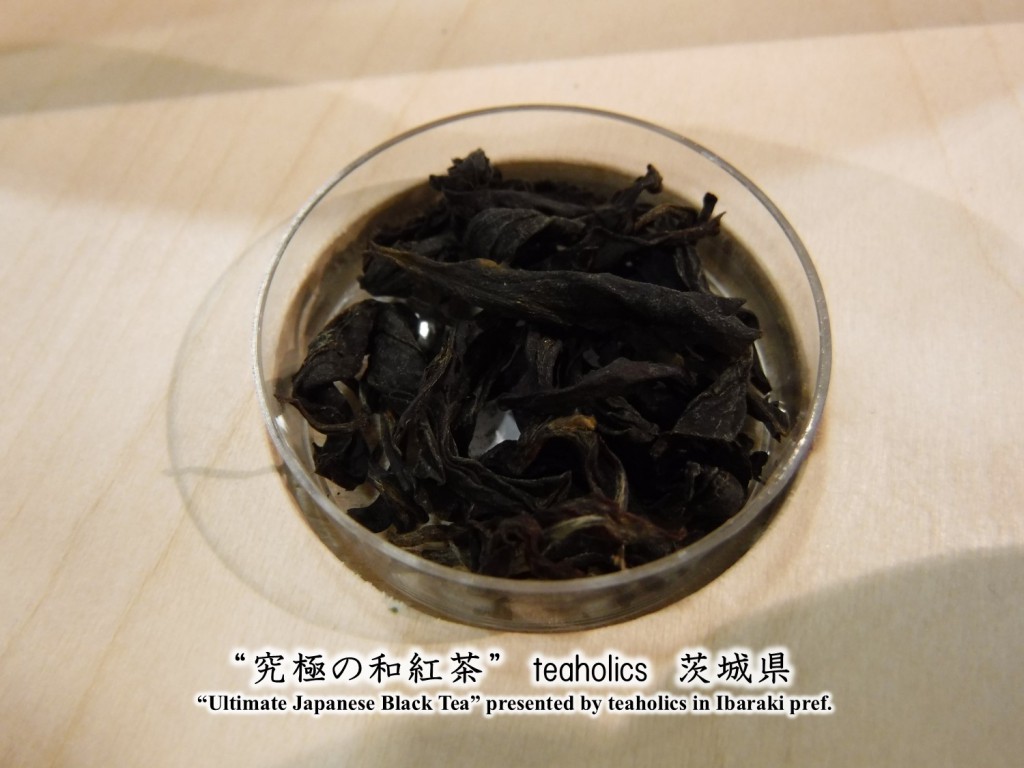 The aroma of infusion and finish both are sweety and fruity. The tea creator blended 4 types of black teas including silver tips, said by her. From before to after tasting the black tea, the aroma would give a pleasure for us.
The aroma of infusion and finish both are sweety and fruity. The tea creator blended 4 types of black teas including silver tips, said by her. From before to after tasting the black tea, the aroma would give a pleasure for us.
Sayama Tea Fujimino Miyabi produced by Uchida Terumi
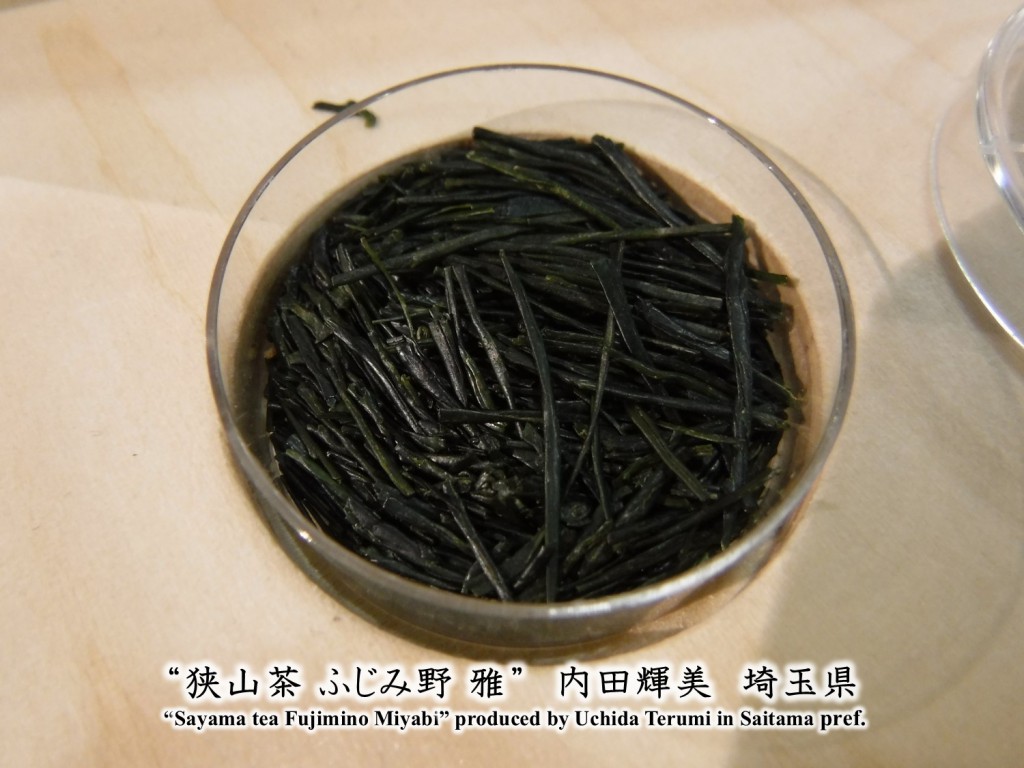 What a beautiful appearance! The flavor, let’s say clean. Unfortunately participants can taste only 1st infusion in the event. I’m very curious with the second infusion of this. I guess it could be a flavorful and we could enjoy its richness.
What a beautiful appearance! The flavor, let’s say clean. Unfortunately participants can taste only 1st infusion in the event. I’m very curious with the second infusion of this. I guess it could be a flavorful and we could enjoy its richness.
Gokase Pan-Fired Tea by Miyazaki Sabo co. ltd.
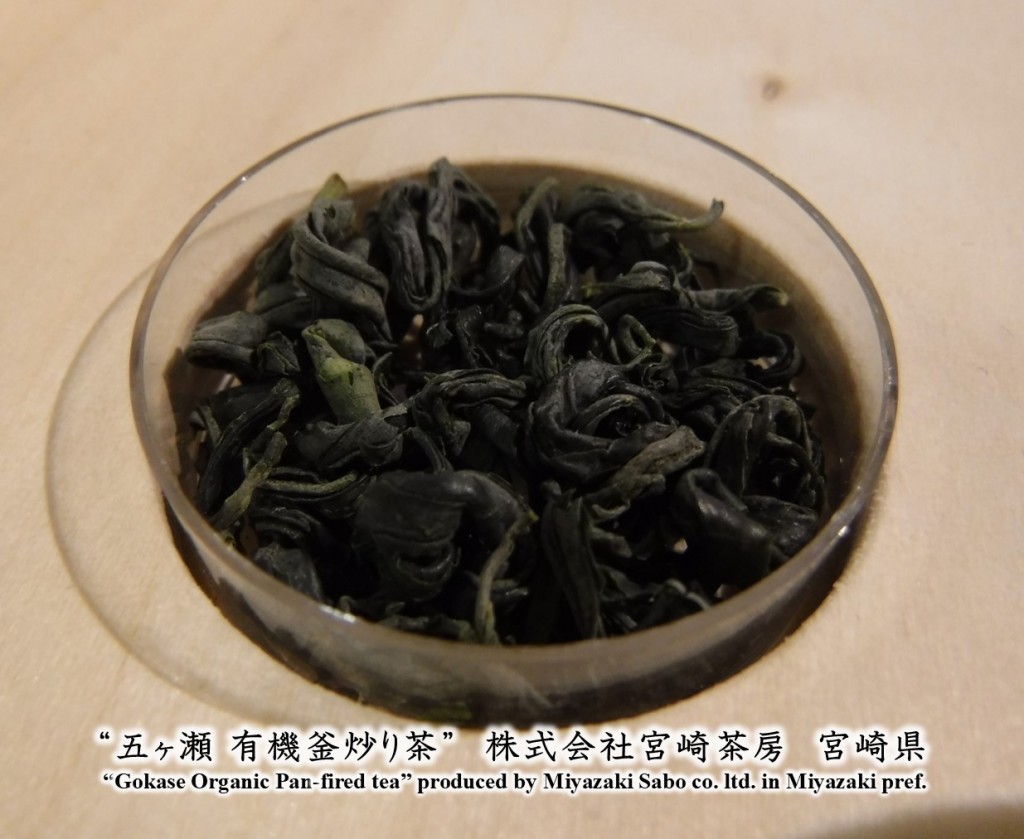 This tea has sweet aroma and an unique richness similar to egg. Sweet aroma might be derived from the aroma generation because of sap-sucking by green leafhopper.
This tea has sweet aroma and an unique richness similar to egg. Sweet aroma might be derived from the aroma generation because of sap-sucking by green leafhopper.
Takachiho Pan-Fired Tea “Tenka” produced by Igeta Seicha Kitazato Chaen
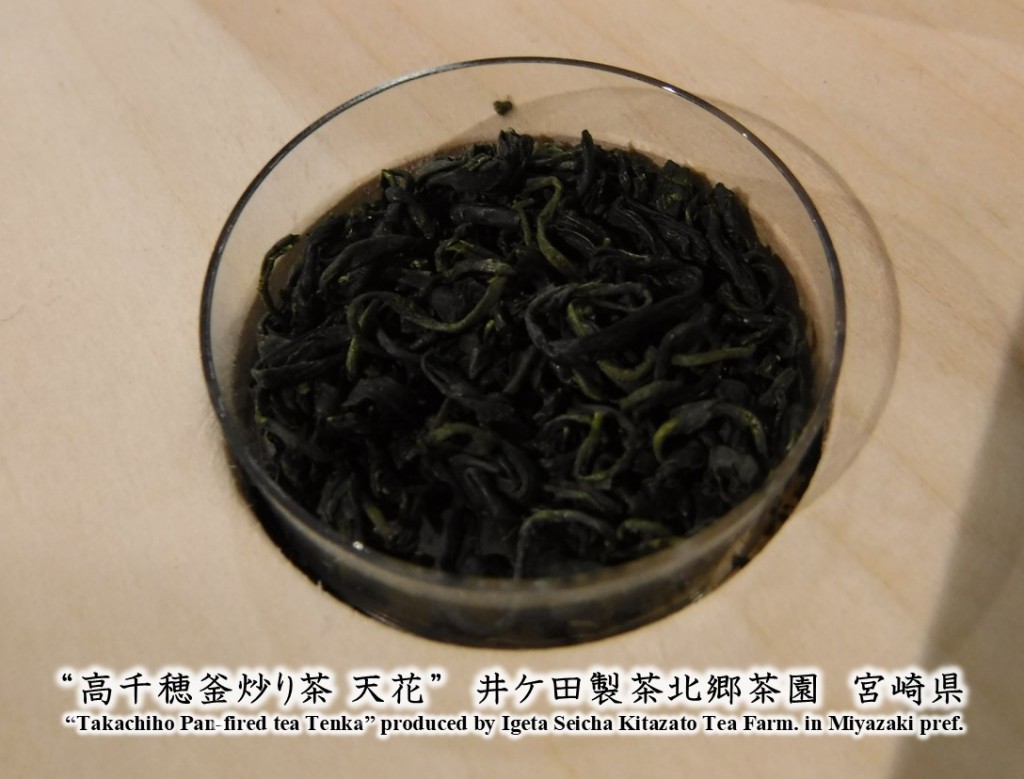
Miyazaki ‘Okumidori’ produced by Igeta Seicha Kitazato Chaen
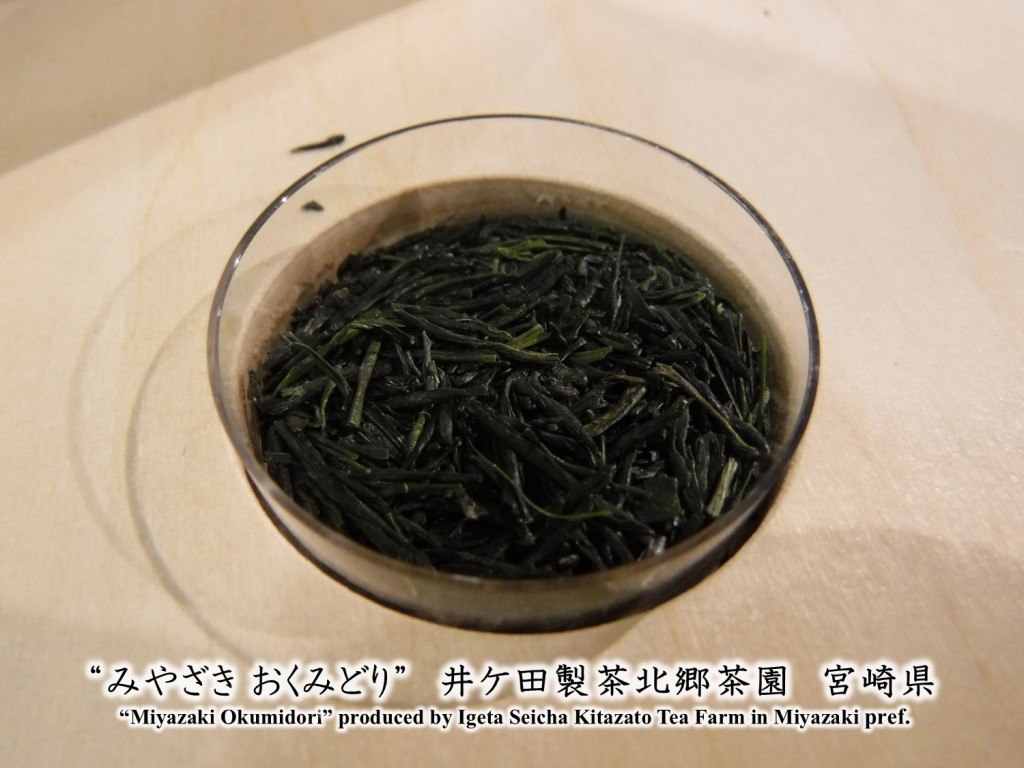
Uji Sencha Saikohou Hikari Mark produced by Shohokuen Chaten co. ltd.
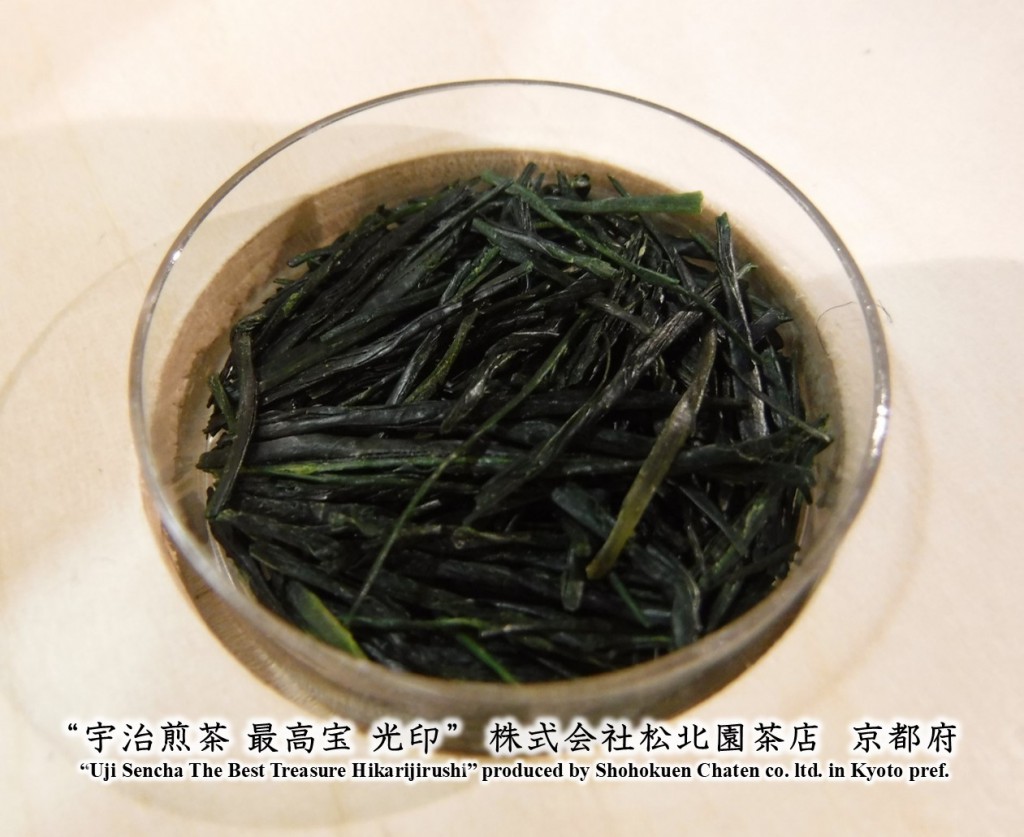
Uji Gyokuro Saikohou Homare Mark produced by Shohokuen Chaten co. ltd.
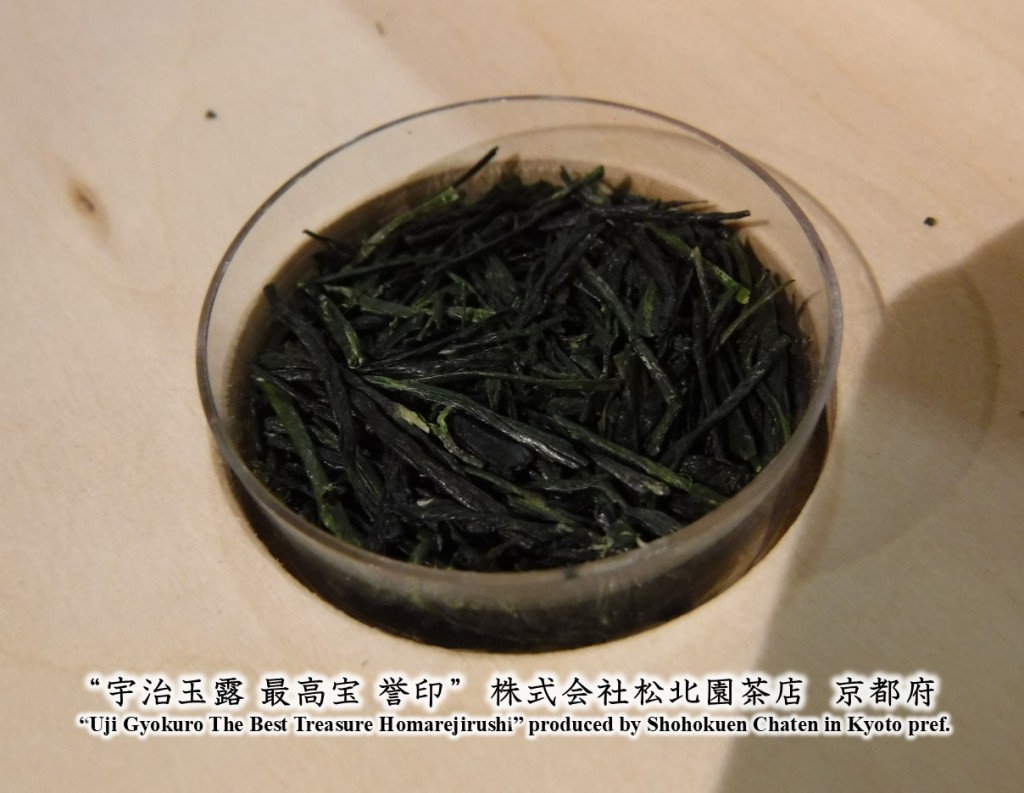
Sadaan Koki produced by Ushijima Seicha co. ltd.